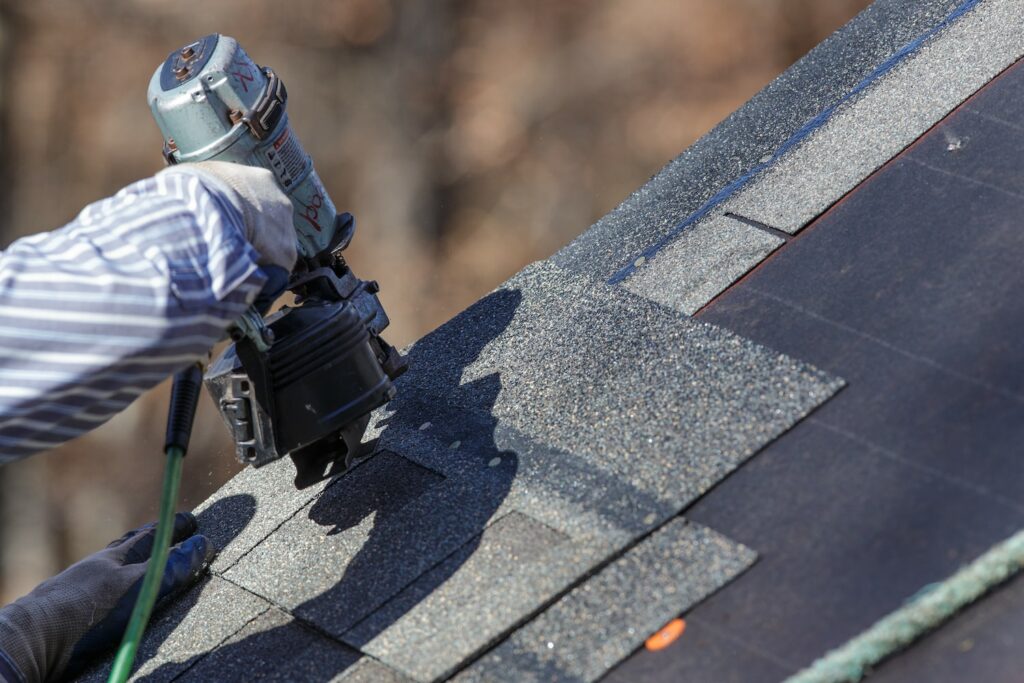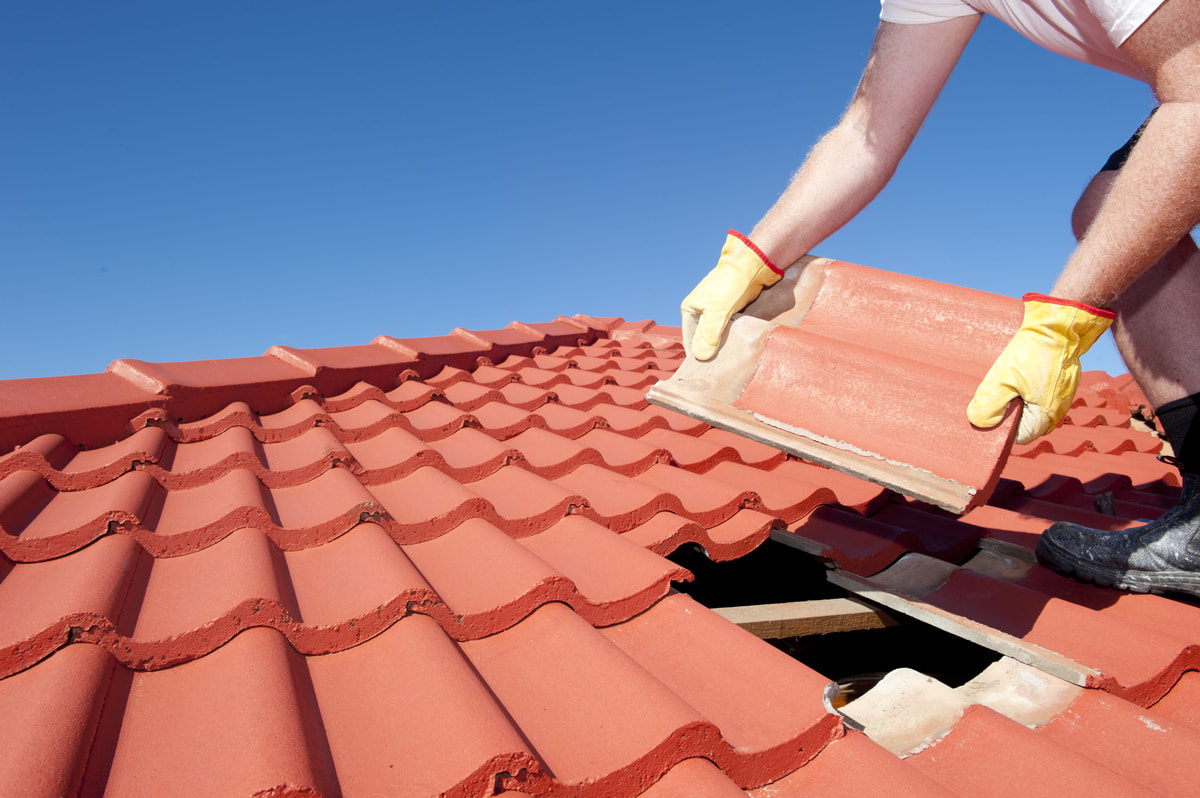Seasonal Roof Covering Fixing Checklist: Prepare Your Roofing for Every Climate
By following a seasonal roofing system repair service list, you can stay in advance of prospective issues. Let's discover exactly how proper maintenance can safeguard your home and expand your roofing system's life expectancy.
Inspecting Your Roofing System for Wintertime Preparedness
As winter season techniques, it's vital to examine your roof covering to verify it can withstand rough weather condition conditions. Beginning by checking for missing or damaged roof shingles; also a little issue can cause substantial leakages when snow and ice build up. Next off, take a look at the blinking around vents and chimneys-- this area is typically susceptible to water invasion.
Don't neglect to search for signs of sagging or irregular surface areas, as these might indicate structural troubles. Additionally, validate your seamless gutters are clear; stopped up gutters can lead to ice dams that damage your roof.
 roof repair
roof repair
Spring Cleaning: Clearing Debris and Checking for Damage
As soon as winter months's hold launches, it's time to tackle spring cleaning on your roofing by eliminating particles and inspecting for any damages. Start by checking your roof covering for dropped branches, leaves, and various other debris that can catch wetness and cause rot. A clean roof advertises much better water drainage and prevents mold and mildew development.
Following, get hold of a durable ladder and thoroughly examine roof shingles for cracks or missing pieces. Take note of locations around smokeshafts and vents, as these spots are vulnerable to leaks. Do not neglect to examine your seamless gutters, guaranteeing they're without blockages that might cause water pooling.
While you're up there, try to find indicators of wear, like rust on steel blinking or loosened seals around skylights. Addressing them now can conserve you from expensive repair work later if you detect any type of issues. A little springtime cleansing goes a long way in keeping your roof's integrity.
Summer Season Warmth: Examining Your Roof Covering for Heat-Related Issues
As summertime heat magnifies, it's important to inspect your roofing system for heat-related concerns. Check for any type of roof shingles damages, look for indications of heat buckling, and evaluate exactly how well your roof aerates. Taking these actions now can protect against larger troubles in the future.
Check for Shingle Damage
 roof repair
roof repair
Examine for Heat Buckling
Warmth fastening is a common issue that can arise throughout the scorching summer months, and it's important to check for it on your roof covering. Begin by inspecting your roofing visually; look for any unequal surface areas or lifted edges. If you identify any kind of indications of heat fastening, it's crucial to address them promptly to stop more damage.
Evaluate Roof Air Flow Performance
After looking for heat fastening, it's essential to assess your roof's ventilation efficiency. Correct ventilation helps regulate temperature level and moisture, avoiding damages from extreme warm. Begin by inspecting your vents; make certain they're not blocked by particles or insulation. Search for indicators of inadequate air movement, like warmth accumulation in your attic room or distorted roof materials. You could likewise intend to check if your soffit vents and ridge vents work with each other successfully. If your home really feels stale and overheated, think about upgrading to more reliable ventilation systems, like powered attic room fans or additional soffit vents. Remember, keeping excellent air flow not just extends your roofing's life yet also boosts your home's total power efficiency, ensuring comfort during those hot summer season months.
Rainy Season Preparedness: Making Certain Appropriate Drainage
As the stormy period methods, you need to guarantee your roofing's drainage system prepares to manage hefty downpours. Begin by examining your rain gutters and downspouts, and see to it they're free from debris. Do not forget to inspect the flashing and seals to prevent leakages and water damages.
Examine Downspouts and gutters
Beginning by checking for any noticeable debris, like fallen leaves or twigs, that could obstruct the flow of water. Next, check out the downspouts for clogs or damages; an obstructed downspout can create water to overflow, possibly destructive your roofing and structure. If you spot any type of concerns, resolve them promptly to stop expensive repair services.
Clean Roofing Surface Area Debris
Utilize a roof covering rake or mop to carefully remove debris, being careful not to harm the shingles. After cleansing, monitor your roof after hefty rainfalls to detect any kind of prospective concerns early. Keeping your roof clear of particles is important for preventing pricey repairs down the line.
Check Flashing and Seals
After clearing your roofing system of particles, take a more detailed look at the flashing and seals around vents, skylights, and chimneys. If you see any damage, it's crucial to repair or replace it promptly. Guaranteeing these parts are in good problem will assist keep correct drain and safeguard your home from water damage throughout heavy rainfall.
Checking and Preserving Roof Covering Seals and Flashing
While it might seem easy to forget, checking and maintaining roof covering seals and blinking is important for preventing leaks and water damages. Begin by inspecting the seals around skylights, vents, and chimneys. Seek any splits, gaps, or indicators of wear. It's best to reseal them with suitable roofing sealer to assure a limited fit. if you identify any problems.
Following, analyze the flashing, which guides water away from important locations. Examine for rust, loosened sections, or bent sides.
Last but not least, don't neglect to clean off any type of particles that may block the seals or flashing. Keeping these elements in good form will certainly help safeguard your roofing versus the aspects and expand its life-span.
Gutter Maintenance: Keeping Water Streaming Efficiently
Since your gutters play a crucial duty in guiding rainwater Gainesville roofing estimates away from your home, routine maintenance is crucial for preventing water damage and foundation concerns. A clogged rain gutter can lead to water overflow, which may damage your roof and siding.
Following, check for any indicators of rust, holes, or drooping areas. If you discover any type of damage, fixing or replace the afflicted parts promptly. Confirm downspouts are routing water at the very least 6 feet far from your foundation. Consider including extensions if required.
Ultimately, inspect that your gutters are properly sloped, preferably a quarter inch for every 10 feet. This incline guarantees water moves efficiently towards the downspouts. Normal maintenance will certainly maintain your seamless gutters functioning effectively and secure your home from costly repair work.
Scheduling Specialist Evaluations for Comprehensive Treatment
Regularly organizing professional examinations is vital for maintaining your roofing system's honesty. These specialists can identify potential problems prior to they turn into expensive repair services. Aim for at the very least two assessments a year-- one in the springtime and another in the autumn. This timing enables you to attend to any type of damage brought on by winter months weather or summer season tornados.
During inspections, professionals will certainly analyze shingles, flashing, and ventilation, guaranteeing every little thing's in leading shape. They'll also look for indications of wear, leaks, or mold, which you could forget. Setting up these inspections not just extends your roofing's life-span yet likewise provides you satisfaction.
If you're uncertain regarding the condition of your roofing, do not think twice to call an expert. Spending in these examinations now can save you a great deal later on. Prioritize your roofing system's health and wellness, and you'll be well-prepared for whatever climate comes your means.
Regularly Asked Questions
Just how Usually Should I Check My Roof Throughout the Year?
You ought to examine your roofing system at the very least twice a year, preferably in springtime and fall. After extreme weather condition occasions, check for damage too. Regular assessments assist you catch problems early and conserve money on fixings.
What Indicators Show I Need a Roofing System Replacement Rather of Repair Service?
 roof repair
roof repair
Can I Do Roof Covering Repair Works Myself, or Should I Work with an Expert?
You can carry out minor roof repairs yourself if you're comfortable with heights and fundamental devices, but employing a specialist guarantees safety and security and appropriate job. Do not take the chance of damage; it may be worth the investment for assurance.
What Are the most effective Products for Roofing System Services in Different Climates?
For different climates, you'll desire products like asphalt shingles for modest locations, metal roof for extremes, and clay floor tiles for warm areas. Always think about neighborhood weather condition patterns to guarantee your roofing system stands up to the elements effectively.
Just How Do Roof Guarantees Affect Seasonal Upkeep Responsibilities?
Roofing system service warranties typically define maintenance duties, so you'll require to review the terms. If you don't maintain your roof covering as required, you might invalidate the guarantee, leaving you liable for expensive fixings.
Seasonal Roof Covering Fixing Checklist: Prepare Your Roofing System for Every Weather
Once winter months's hold releases, it's time to take on springtime cleaning on your roofing system by getting rid of away debris and examining for any kind of damage. Inspect for any tile damage, look for signs of warmth fastening, and evaluate how well your roof covering aerates. If you find any concerns, think about contacting an expert for repair services to keep your roofing in leading shape and protect your home from prospective water damage.
While it could seem simple to overlook, examining and keeping roof covering seals and flashing is necessary for avoiding leaks and water damage.